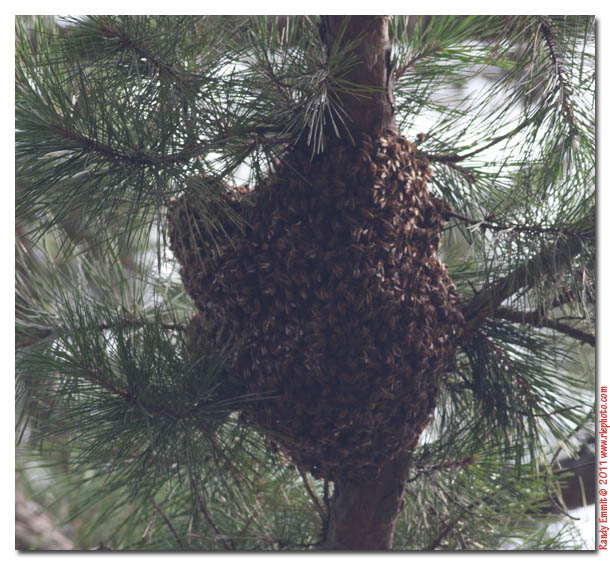This frame is one of 4 frames entirely full of honey, no brood just honey nearly 10 pounds of honey. This brood box was installed around July 01 with brand new frames, so the bees had to draw out the wax and make the honey, not bad for two months. The bad news is this honey is mostly made from sugar syrup and not very good honey, the bees will need in over the winter.
Same frame as above full of honey. Those bees are intent on full the entire frame!
These raised capped brood are drone brood, not seen many drone brood in my hive since the hive was installed in May 2001.
Finally I have a photo of an bee emerging, I saw 3-4 today during my inspection.
 |
That little black beetle is a Small Hive Beetle, saw more than I cared for today, managed to kill a few of them. Fast little guys too. I believe I pulled out 2 of their larva, all white and slimy.
My late post showed a video of bees bringing in pollen, well there it is bright yellow/orange.
This is the top of the bottom brood box. I removed a lot of built up cells like the ones you see on top of the frames. Some of the wax built up on the side walls of the hive had Small Hive Beetles in it.
This shows eggs in the last frame I checked (number 20), I was pretty worried I was not going to find eggs after not finding any in 19 frames. They are hard to see, those tiny white elongated specks are eggs, correct me if I'm wrong.
This is the extra was I scrapped off the tops and sides of the frames and brood boxes today. A tiny bit of honey to taste too. Now I need to figure out what to do with the wax?
I set the top brood box on these concrete blocks, these bees kind of covered one block pretty good. That brood box was 85-90% honey and 70 pounds at least it was heavy! They were still filling cells with honey and all the wax was drawn out. So I added a honey super. For those of you wondering what is a honey super, it is a shallower box like the brood box you put on the top for the bees to fill with honey.
Today was the first time I took off the upper brood box since it was installed in early July, not my best move. It should have been inspected the last time I inspected but there were so many bees and they got angry I did not do it. I learned today these boxes are heavy and replacing them back in the stack full of bees kills a lot of bees, I need to learn the best way to take them off and replace them so not to kill so many of them that crawl onto the top of the boxes.
Received my second bee sting today since I got the hive, not too bad on my leg. They could have stung my arms as I was short sleeved. Here in the hive now, two deep brood boxes, one honey super and top feeder (green). Nope the bottle wall behind the hive had not have any progress yet, anyone got a weed eater?
I mentioned in the last post I got some 1 x 12 spruce for $10. Made 4 brood boxes out of it, they sell for $16 each it took me an hour to make them with my table saw..






















































